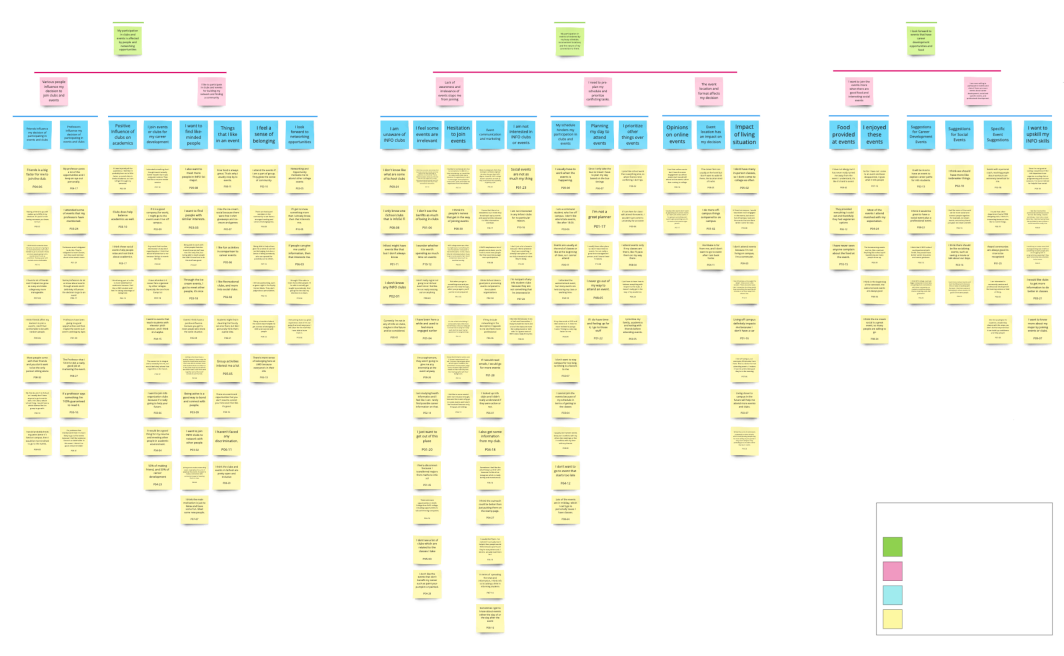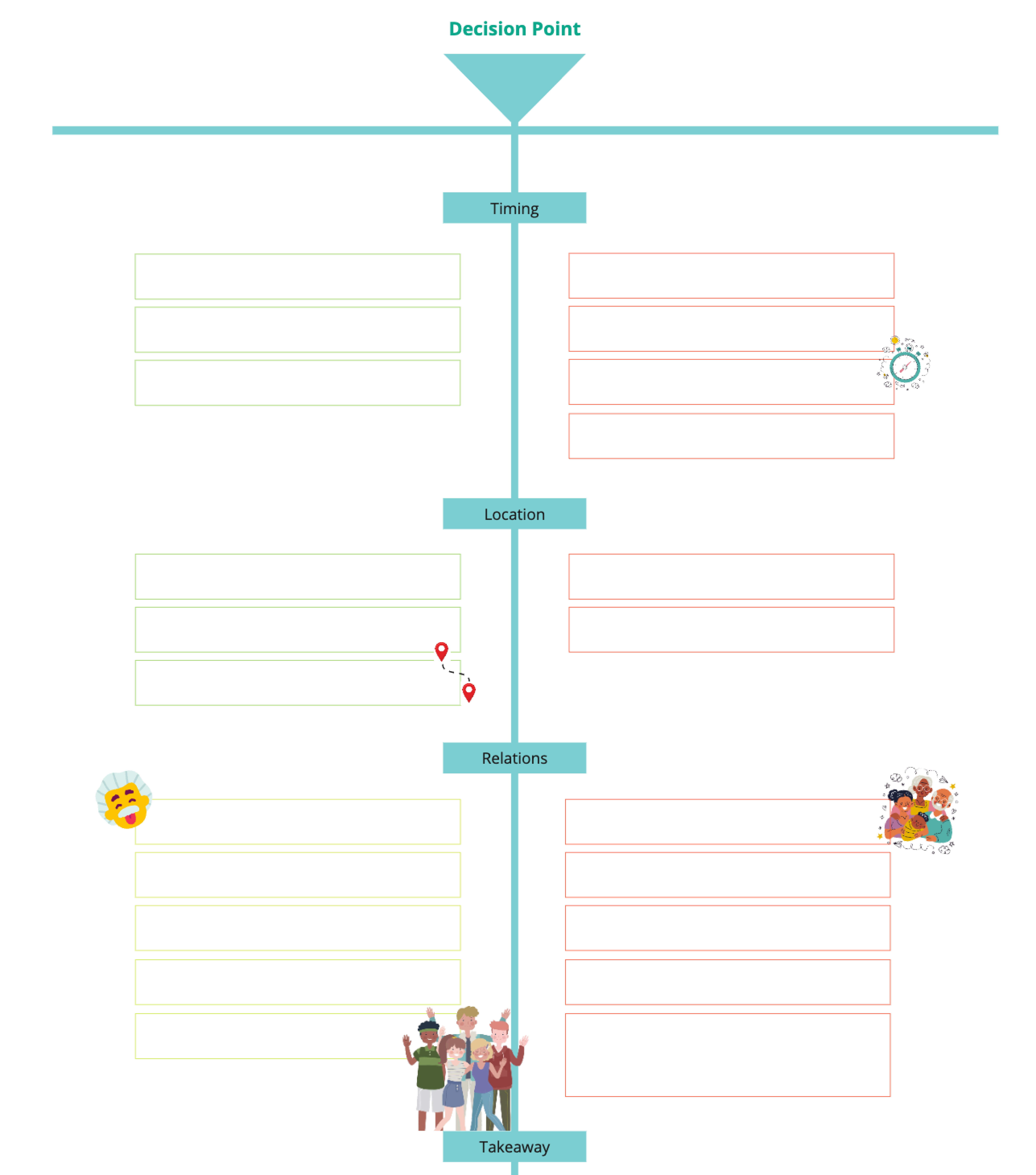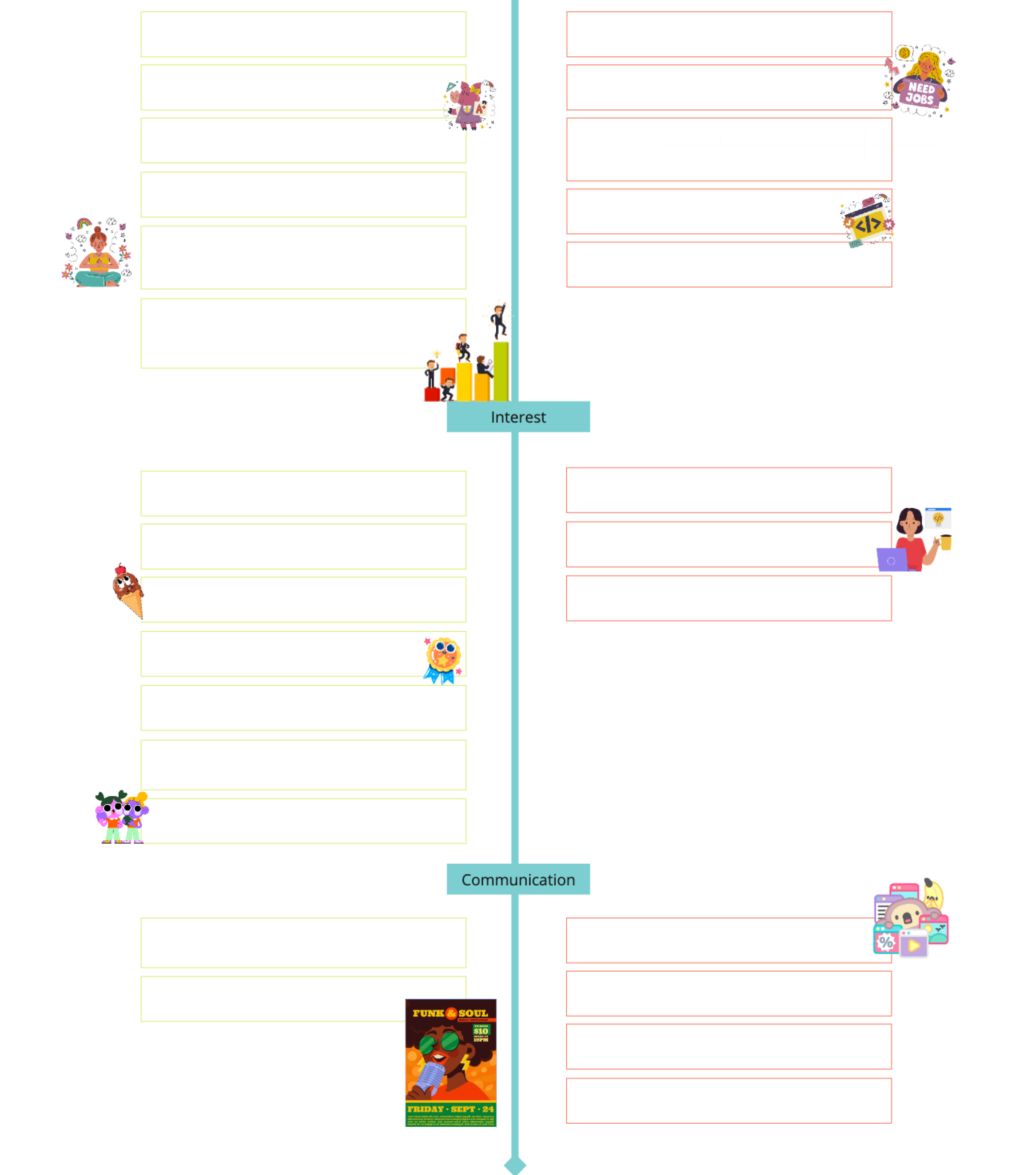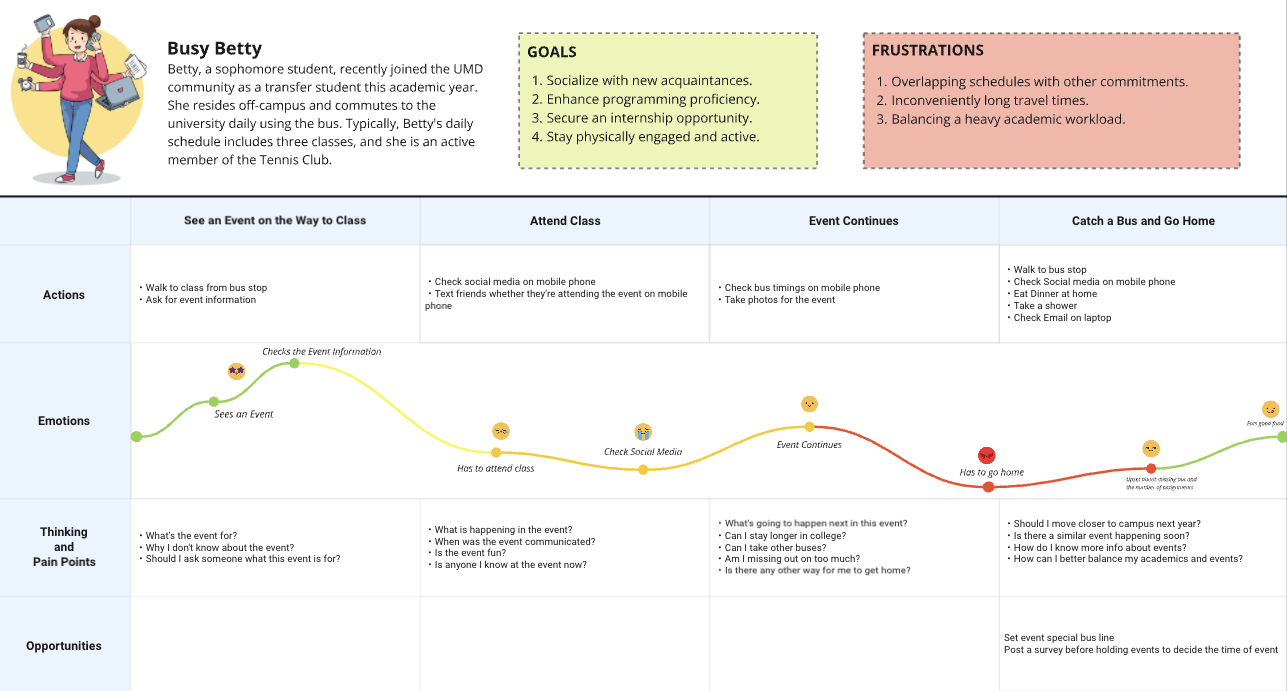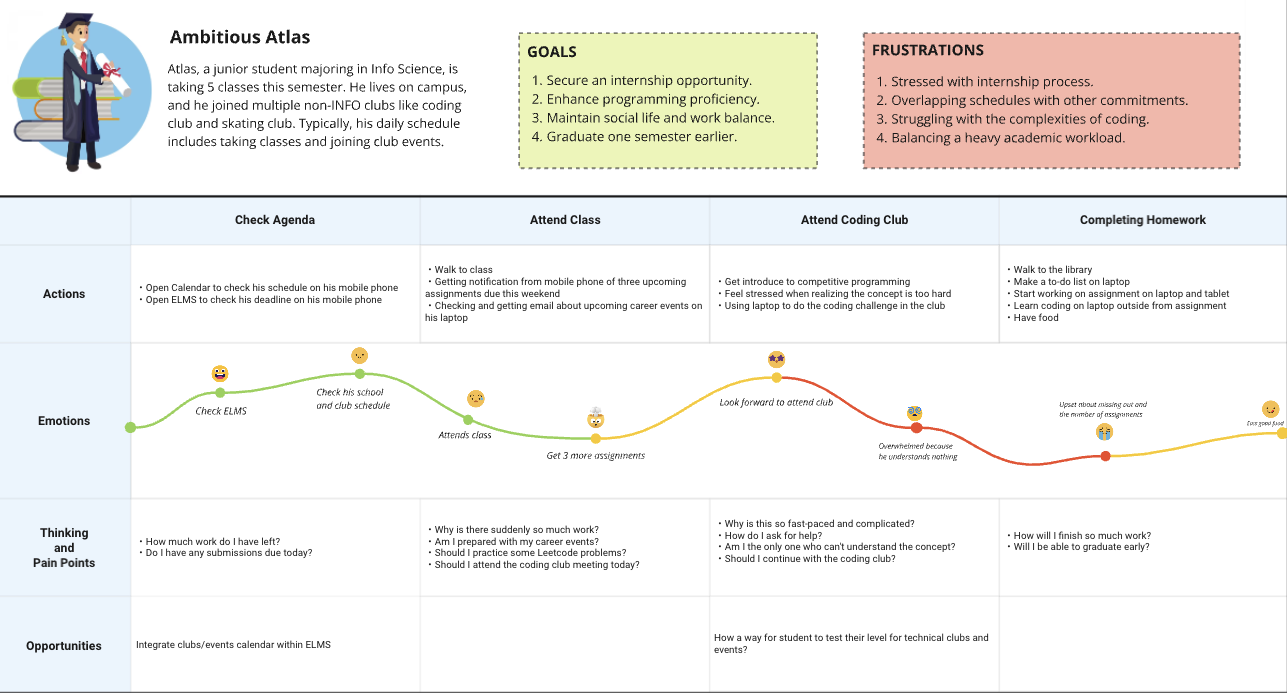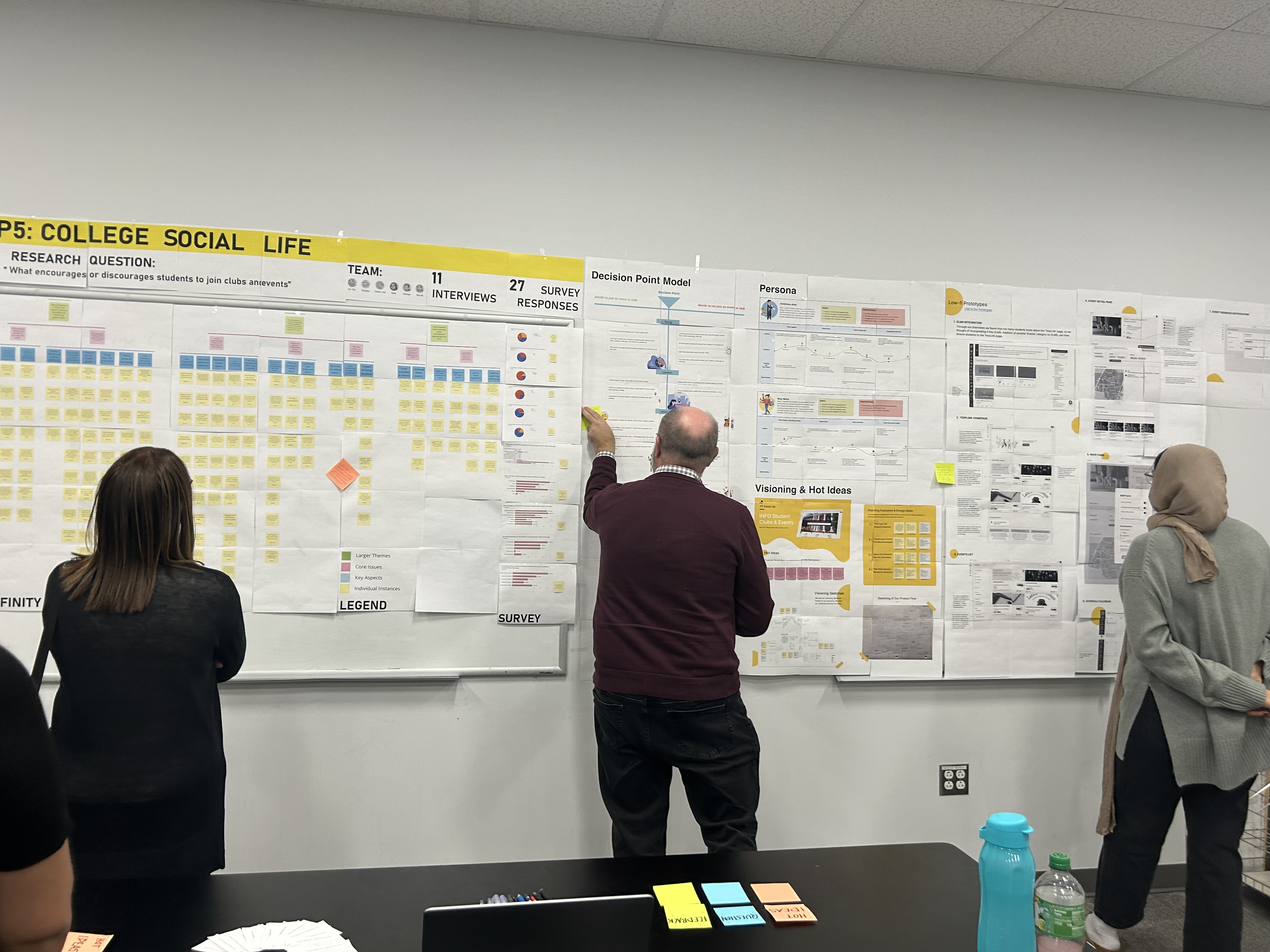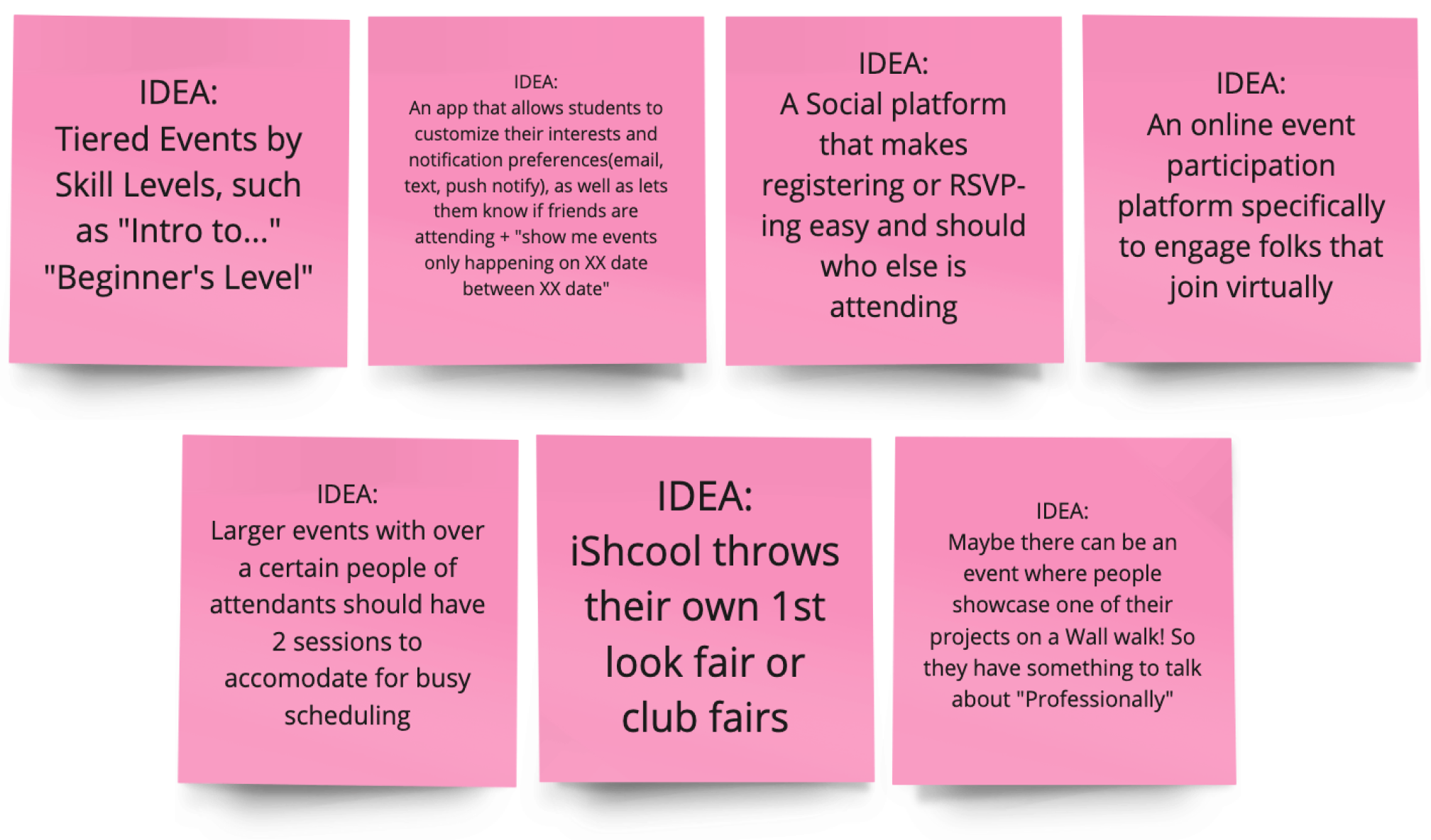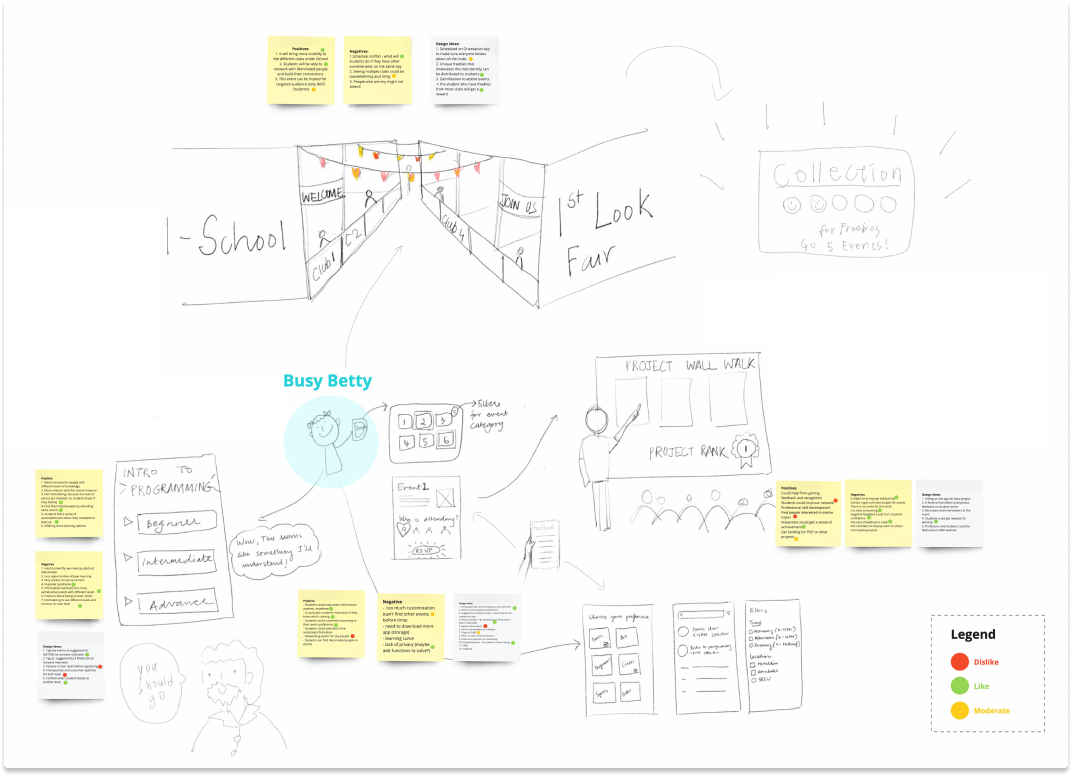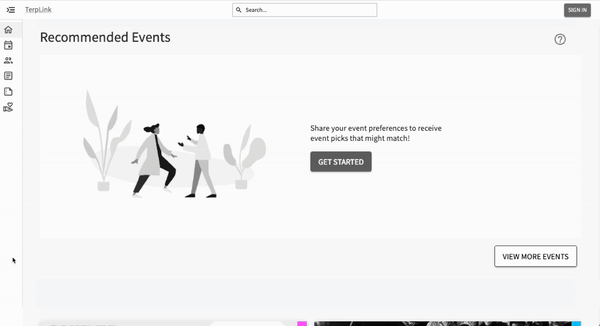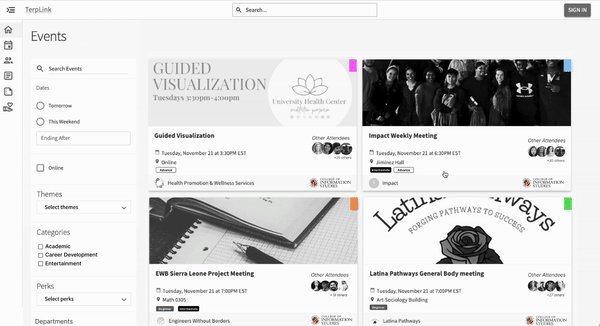Project Overview
This project, conducted as part of a User Research course, investigated the social lives of undergraduate Information Science students at the University of Maryland.
Through surveys, interviews, and a comprehensive analysis of student experiences, the research aimed to understand the factors influencing student participation in university events and clubs. These insights were then used to develop a conceptual design for a new events platform that better addresses student needs and fosters a stronger sense of community.
Role
Interviewer, Moderator, Designer
Tool
Figma, Miro, Adobe Illustrator,
Contextual Inquiry, Interview and Surveys
Team Size
6-Member Group Project
What encourages/stops
students to join events and organizations?
How do they usually decide to
participate in the event?
Limited Awareness
Students often don't know about the many events and clubs happening on campus.
Lack Relevant Information
It's hard for students to easily find information about events, like when they are, where they are, and what they're about.
Desire for Career-Oriented
Students want more events that can help them with their future careers, like networking events or workshops.
Lack of Interests
Students often don't know about the many events and clubs happening on campus.
Not Engaging Enough
Students prefer events that are fun and involve active participation, rather than just passive listening.
Lack of Time and Energy
Students are busy with classes, work, and other commitments, making it hard to find time for events.
Affinity Diagram
The Affinity Diagram is the simplest way to organize field data. It arranges the notes from Interpretation Sessions into a hierarchy that reveals common issues and themes across all users.
The Affinity shows the scope of the problem: it reveals in one place all the issues, worries, and key elements of the users’ lives relevant to the team’s focus.
Decision Point Model
We concluded on six main factors- timing, location, relations, takeaways, interest, and communications.
Persona and Journey Map
Based on the insights from our interviews and affinity map, we developed 2 personas that are representative of the goals and pain points of our target users.
Personas are a great tool for easily communicating who the target users are (Holtzblatt & Beyer, 2017, Chapter 8.) Developing these personas was instrumental in gaining a deeper understanding of our users, and helped our client connect with our research findings.
Wall Walk
Wall walk involves displaying ideas, sketches, or research findings on a wall or large surface. Team members then physically move around, observing, discussing, and annotating the presented information.
This collaborative and visual approach fosters critical thinking, encourages diverse perspectives, and sparks unexpected connections. Wall walks are particularly valuable for brainstorming, identifying patterns, and refining design concepts.
Hot Ideas
We collected hot ideas from wall walk, including tiered events for different skill levels, a customizable app for event discovery and friend tracking, and a streamlined social platform for easy registration.
To accommodate busy schedules, larger events could be offered in two sessions. Additionally, initiatives like iSchool-hosted fairs and showcasing student projects could foster professional connections and enhance the overall student experience.
Envisioning & Design Ideas
Integration with ELMS
Seamlessly integrate the events platform with the university's learning management system (ELMS) to increase awareness and drive student engagement.
Level Assessment
Address student anxiety regarding skill level in coding events by incorporating a clear and accessible level assessment system.
Schedule Planning Tool
Assist students in navigating scheduling conflicts and time constraints, particularly relevant for commuting students, by providing a user-friendly schedule planning tool.
Post-Event Feedback Collection
Implement a streamlined and efficient system for collecting post-event feedback to continuously improve the quality and relevance of future events.
This project provided valuable experience in the user-centered design process, from initial research to conceptual design. Developing personas and journey maps proved particularly helpful in understanding the diverse needs and motivations of our target users.
The wall walk and brainstorming sessions fostered creativity and collaboration within our team. One challenge we encountered was balancing the desire for a comprehensive platform with the need for simplicity and ease of use.
If I were to revisit this project, I would focus on user testing the lo-fi prototype to gather feedback on usability and identify areas for improvement. I would also explore gamification elements to further incentivize student participation and engagement. This project solidified my understanding of the crucial role user research plays in creating effective and user-friendly solutions. It also highlighted the importance of iterative design and continuous feedback throughout the development process.
I learned how to synthesize large amounts of qualitative data into actionable insights and translate those insights into tangible design solutions. This experience has significantly strengthened my research and design skills and has fueled my passion for creating user-centered products.


